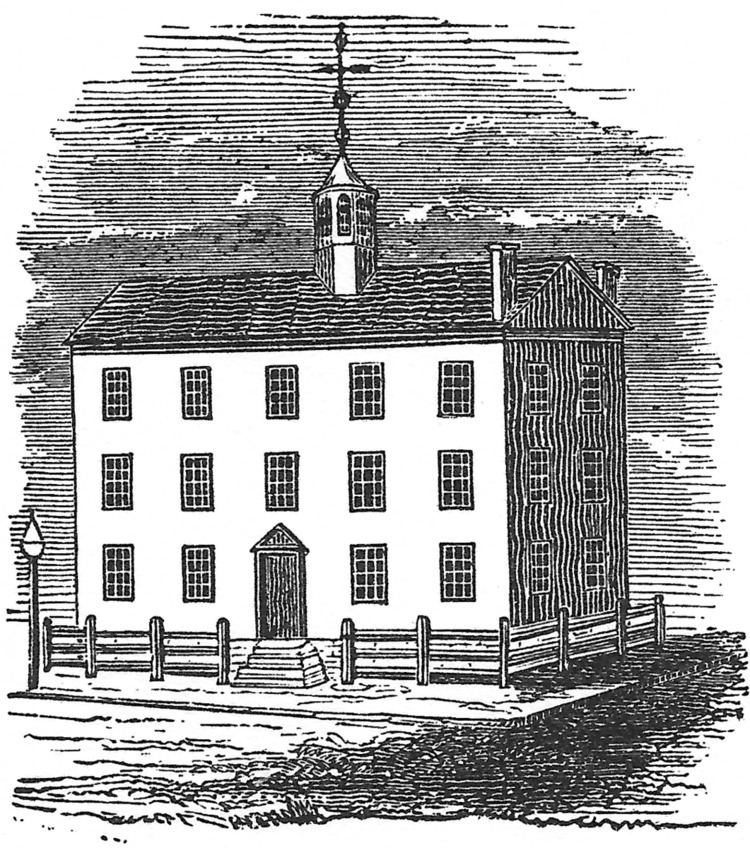Members 24 Members 70 (de facto 65) | Party control Federalist | |
 | ||
Jurisdiction New York, United States Term July 1, 1789 – June 30, 1790 President Lt. Gov. Pierre Van Cortlandt | ||
The 13th New York State Legislature, consisting of the New York State Senate and the New York State Assembly, met from July 6, 1789, to April 6, 1790, during the thirteenth year of George Clinton's governorship, first in Albany, then in New York City.
Contents
Background
Under the provisions of the New York Constitution of 1777, the State Senators were elected on general tickets in the senatorial districts, and were then divided into four classes. Six senators each drew lots for a term of 1, 2, 3 or 4 years and, beginning at the election in April 1778, every year six Senate seats came up for election to a four-year term. Assemblymen were elected countywide on general tickets to a one-year term, the whole assembly being renewed annually.
In March 1786, the Legislature enacted that future Legislatures meet on the first Tuesday of January of each year unless called earlier by the governor. No general meeting place was determined, leaving it to each Legislature to name the place where to reconvene, and if no place could be agreed upon, the Legislature should meet again where it adjourned.
A Convention met from June 17 to July 26, 1788, at Poughkeepsie, and ratified the U.S. Constitution by a vote of 30 to 27. This was the first time that the politicians were divided into two opposing political parties: those who advocated the creation of a stronger federal government and the adoption of the US Constitution, as drafted, were henceforth known as Federalists, those who advocated stronger State governments and demanded many changes to the proposed Constitution as Anti-Federalists, or Democratic-Republicans.
On January 27, 1789, the Legislature divided the State of New York into six congressional districts, and the first congressional elections in New York were held on March 3 and 4, 1789. But after a lengthy debate of "An act for prescribing the times, places and manner of holding elections for Senators of the United States of America, to be chosen in this State", the Legislature adjourned without having elected U.S. Senators. The Anti-Federalist Assembly majority and the Federalist Senate majority agreed to adjourn earlier than usual, leaving it to the new members to find a way out of the deadlock. On June 6, Gov. George Clinton called for a special session of the Legislature to meet on July 6, only a few days after the new members' term would begin.
Elections
The State election was held from April 28 to 30, 1789. Gov. George Clinton and Lt. Gov. Pierre Van Cortlandt were re-elected to a fifth term. Senators Volkert P. Douw and Philip Schuyler (both Western D.) were re-elected; and James Carpenter (Middle D.), and Assemblymen Philip Livingston (Southern D.), John Cantine (Middle D.) and Alexander Webster were also elected to the Senate.
Sessions
The State Legislature met from July 6 to 16, 1789, at the Old City Hall in Albany, to resume the election of U.S. Senators, and elected State Senator Philip Schuyler and Assemblyman Rufus King, both Federalists, who took their seats in the U.S. Senate of the 1st United States Congress a few days later at Federal Hall in New York City, where Congress met until September 29, 1789, and again from January 4, 1790.
The Legislature was to meet for the regular session on January 5, 1790, at the Old Royal Exchange in New York City; the State Senate assembled a quorum first on January 12, the Assembly on the next day; and both Houses adjourned on April 6.
State Senators Philip Schuyler, John Hathorn and John Laurance, and Assemblyman Rufus King retained their seats in the Legislature while serving concurrently in the 1st United States Congress. Schuyler was also elected on January 15 a member of the State's Council of Appointment which consisted of the Governor of New York, and four State Senators elected annually by the State Assembly. On January 27, the Legislature resolved that it was "incompatible with the U.S. Constitution for any person holding an office under the United States government at the same time to have a seat in the Legislature of this State," and that if a member of the State Legislature was elected or appointed to a federal office, the seat should be declared vacant upon acceptance. Thus Schuyler, King, Hathorn, Laurance and federal judge James Duane vacated their seats in the State Legislature. On April 3, John Cantine, a member of the Council of Appointment, raised the question if Schuyler, after vacating his State Senate seat, was still a member of the Council. Philip Livingston, another member, held that once elected, a member could not be expelled from the Council in any case. On April 5, Gov. George Clinton asked the State Assembly for a decision, but the latter refused to do so, arguing that it was a question of law, which could be pursued in the courts. Schuyler thus kept his seat in the Council of Appointment until the end of the term.
Districts
Note: There are now 62 counties in the State of New York. The counties which are not mentioned in this list had not yet been established, or sufficiently organized, the area being included in one or more of the abovementioned counties.
Members
The asterisk (*) denotes members of the previous Legislature who continued in office as members of this Legislature. Philip Livingston, John Cantine, Edward Savage and Alexander Webster changed from the Assembly to the Senate.
Employees
Districts
Note: There are now 62 counties in the State of New York. The counties which are not mentioned in this list had not yet been established, or sufficiently organized, the area being included in one or more of the abovementioned counties.
Assemblymen
The asterisk (*) denotes members of the previous Legislature who continued as members of this Legislature.
